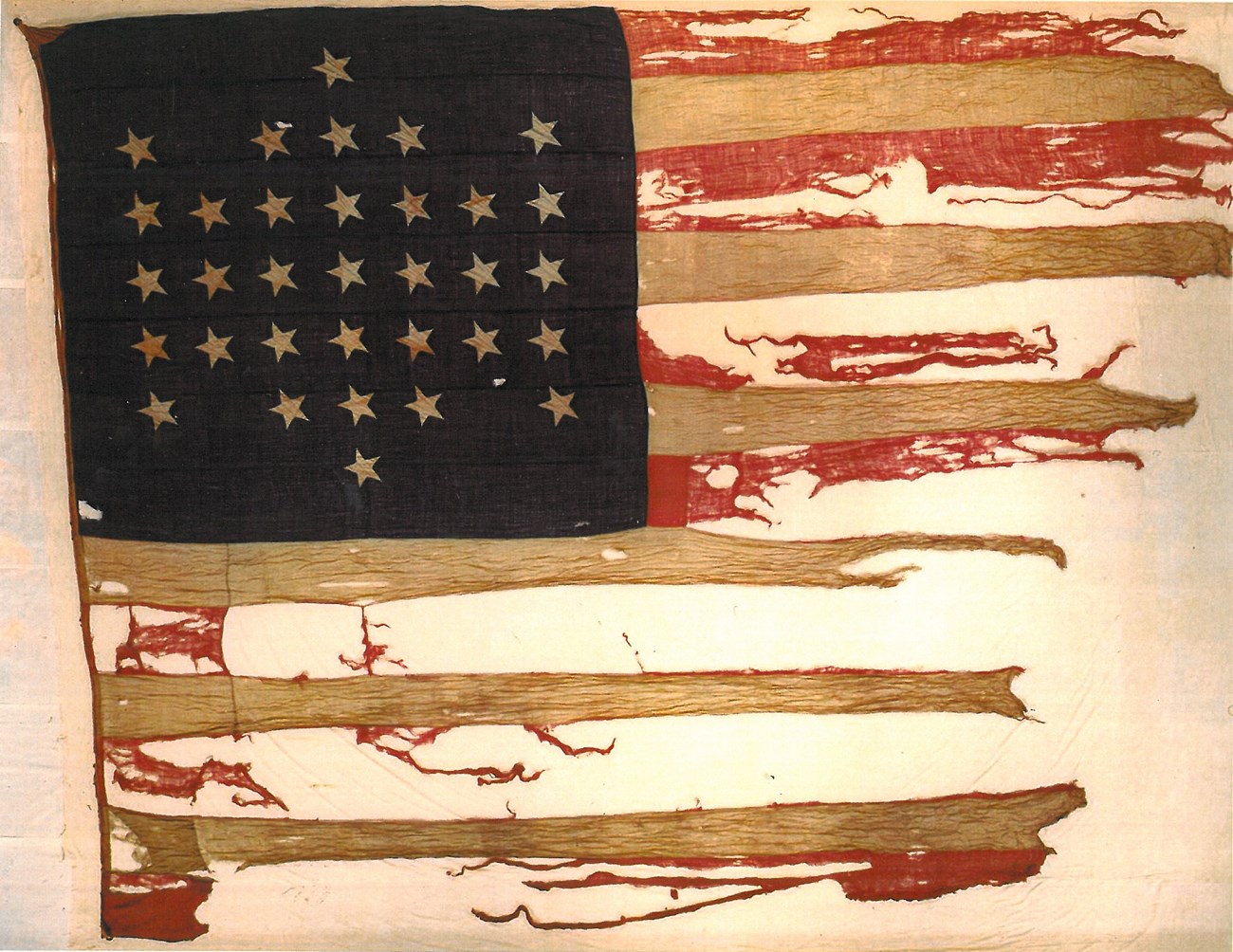Last updated: May 11, 2025
Article
The Fort Sumter "Garrison Flag"

NPS/NPS 0008
Origins
The United States flag between July 4, 1859 and July 3, 1861 had 33 stars, with each star representing one state. In January 1861, a 34th state, Kansas, was added, but would not take its place on the American flag until the 4th of July, which fell after the Civil War began on April 12. [1]
Not all 33-star flags look alike! The star pattern of the flag – here bearing a resemblance to the eagle on US military buttons – was not standardized until the 20th century.
Defiance and Resilience
Before December 26, 1860, the garrison flag was the largest flag that flew at Fort Moultrie. Moultrie, on Sullivan’s Island, was the primary post for US soldiers in Charleston; other forts, including Castle Pinckney and Fort Sumter, were not garrisoned.
However, on December 20, 1860, South Carolina announced that they were seceding from the United States. Suddenly, this US flag’s presence in Charleston Harbor was controversial. Did Charleston’s forts now stand in the United States, or in an independent South Carolina?
On December 26, Major Robert Anderson, commander of Fort Moultrie, moved his men and the garrison flag across the harbor to Fort Sumter. Upon arrival, Anderson ordered the massive the massive garrison flag hoisted over the fort – an unmistakable reminder of the United States presence in Charleston Harbor.
Major Anderson’s decision angered secessionists, who surrounded and aimed their cannons at the flag for more than three months. The fate of the United States was threatened, but the flag continued to fly as both sides waited.
Damage and Preservation
By the early hours of April 12, tensions had escalated to a tipping point. Confederate envoys demanded Major Anderson’s departure, but he held his ground. The country was now only a few hours away from war.
Anderson later stated that the garrison flag “had a slight rip in it”, so he ordered the smaller “storm flag” to be raised instead. The storm flag was used during bad weather conditions. As a result, the storm flag, not the garrison flag, faced a bombardment of roughly 3,400 cannon shots during the first battle of the American Civil War.
When Major Anderson and his men evacuated the fort, they took the flags with them to New York City. Major Anderson kept both flags in his possession, and his family eventually donated them to the United States Department of War.
The Flag Today
The garrison flag would have several homes, including the Pentagon in Washington, DC, before it was obtained by the National Park Service. From 2001 to 2023, the flag was on display at the Fort Sumter Visitor Center in downtown Charleston. Since 2023, the fragile flag has been resting and will undergo preservation work.
The garrison flag, even though it did not fly during the first battle of the Civil War, remains an integral part of Fort Sumter’s story. For more than three months, amid cries of secession, the garrison flag stood as an unwavering reminder that the United States would not be divided.
